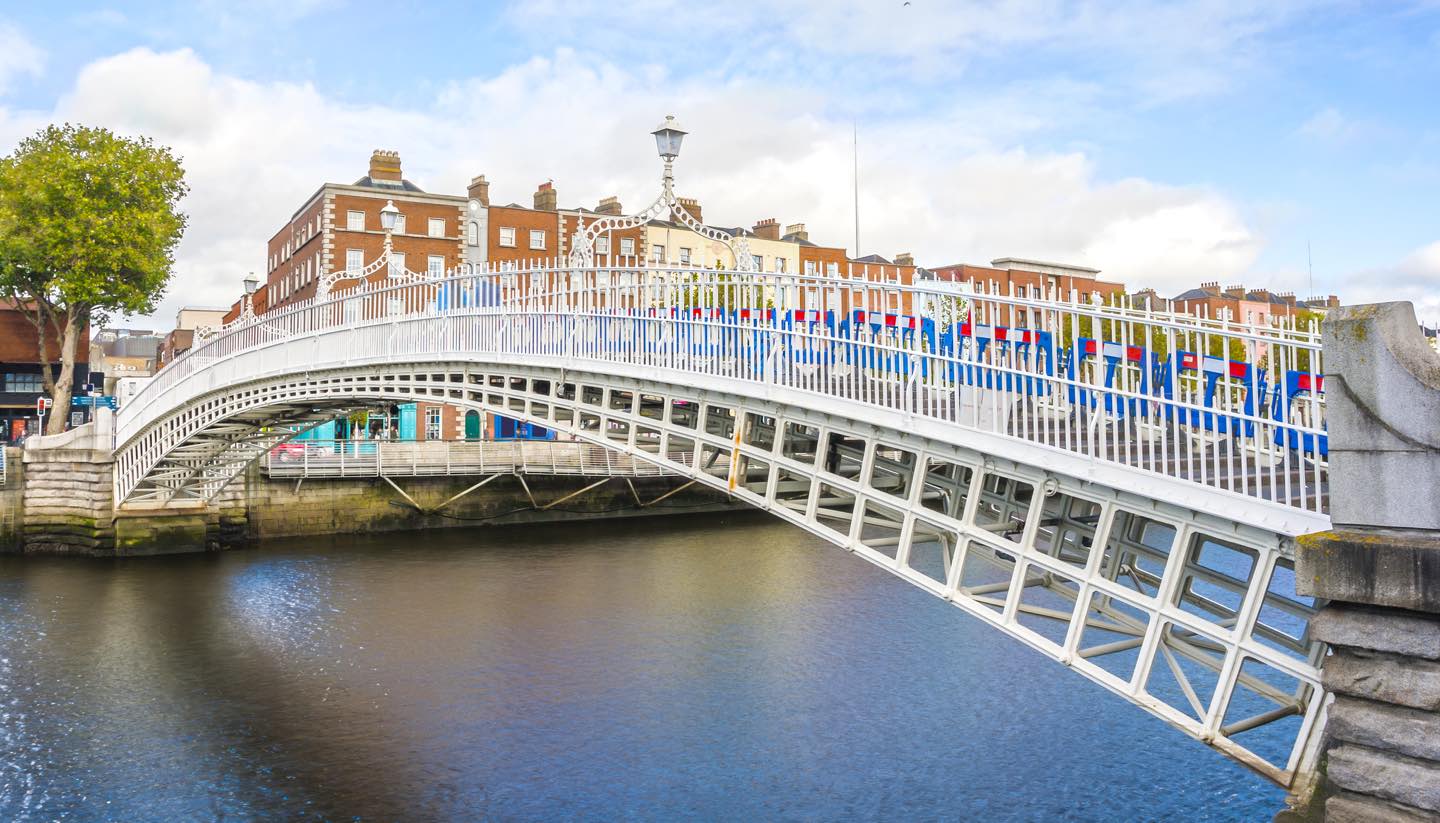Travel to Dublin
Flying to Dublin
A number of different airlines fly to Dublin from the UK, including Aer Lingus, British Airways, CityJet, Flybe and Ryanair. Airlines offering direct flights from the USA to Dublin include Aer Lingus, American Airlines, Delta and United. Prices vary substantially, but tend to peak around summer and other major holidays, and at weekends. Flights from destinations within Europe are cheaper if booked months in advance, with bargains to be had early and late in the year.
Flight times
From London - 1 hour 20 minutes; New York - 6 hours 30 minutes; Los Angeles- 12 hours (including stopover); Toronto - 6 hours 30 minutes; Sydney - 24 hours (including stopover).
Travel by road
Heavy investment over the past two decades has seen a vast improvement in the quality of Irish roads, in particular along main routes, which are often tolled. Rural roads can remain in poor condition and challengingly narrow though, which doesn’t stop locals navigating them at frightening speed.
Speed limits in cities are often as low as 30kph (18mph), while on major highways they commonly reach 120kph (75mph). Driving is on the left, and those driving must be at least 17 years old and hold a valid national driving licence. A Green Card and Motor Insurance certificate are recommended too, but drivers do not need an International Driving Permit.
A country identification sticker is compulsory, as are seat belts. The Automobile Association of Ireland (tel: +353 1 617 9104; www.theaa.ie) provides information on reciprocal agreements with other motoring associations.
Emergency breakdown services
AA Ireland (+353 1 617 9560).
Routes
Dublin is surrounded by the camera-tolled M50 ring road (pay within 24 hours at www.eflow.ie), with major roads heading towards Cork (via the M9), Waterford (M8), Galway (M4) and Belfast (M1).
Coaches
Bus Eireann (tel: +353 1 836 6111; www.buseireann.ie) is by a distance the biggest intercity bus service on offer in Ireland, and services some impressively rural corners, albeit at a much slower pace than you'd achieve by car. While services to isolated corners are infrequent, trips within major cities typically operate at least every couple of hours throughout the day.
Low-cost competitors to Bus Eireann have sprung up on some major routes, in particular through GoBus (tel: +353 91 564 600; www.gobus.ie) which services Cork and Galway throughout the day.
Bus Éireann/Eurolines (tel: +353 1 836 6111; www.eurolines.ie) has daily services to British and other European destinations, including Amsterdam, Brussels, Edinburgh, Leeds, London and Paris.
Time to city
From Belfast - 2 hours; Galway - 2 hours 10 minutes; Cork - 2 hours 40 minutes.
Travel by Rail
Services
Rail services within Dublin are referred to as the DART (Dublin Area Rapid Transit), and best used for the coastal routes both north and south of the city, and for short-distance travel. Connolly (north, on Amiens Street) and Pearse Street (south, on Westland Row) stations form the network's hubs when it comes to accessing the heart of the city, or the luas network (via Connolly).
National rail travel is largely based around Heuston Station (to the west of the city on St John's Road West), which is generally used for trains to the west. Connolly offers national services typically to north and south, though this can vary and is always worth checking.
Operators
Iarnród Éireann (Irish Rail) provides the national rail service (tel: 1850 366 222, in Ireland only or +353 1 836 6222; www.irishrail.ie). There are direct trains to multiple destinations, including hourly services to Cork and trains approximately every two hours to Belfast.
There are many corners of Ireland that are difficult to travel to by rail due to their low population, though the lines that do run are generally well maintained and offer peaceful, pleasant trips.
Journey times
From Belfast - 2 hours 10 minutes; Rosslare - 2 hours 40 minutes; Sligo - 3 hours; Galway - 2 hours 20 minutes; Cork - 2 hours 35 minutes; Kilkenny - 1 hour 30 minutes; Limerick - 2 hours 15 minutes.
Travel by boat
Dublin has two main ports, with a series of harbours. Dublin Port, where most ferries dock, is 6km (4 miles) from the city centre on Alexandra Road. Dún Laoghaire Harbour, 15 Westmoreland Street, is located 14km (9 miles) south of the city. Dublin Port Company (tel: +353 1 887 6000; www.dublinport.ie) oversees both ports.
Ferry operators
Irish Ferries (tel: +353 818 300 400; www.irishferries.com) operates car and foot passenger ferry services up to six times a day between Dublin Port and Holyhead in Wales (journey time - 2 hours for the fast ferry or 3 hours 30 minutes).
Stena Line (tel: +353 1 907 5555; www.stenaline.ie) also operates up to four car ferries a day from between Dublin Port and Holyhead (journey time - 3 hours 15 minutes).
The Isle of Man Steam Packet Company (tel: +44 8722 992 992 (UK Office); www.steam-packet.com) operates summer car ferries to Dublin Port from the Isle of Man (journey time - 2 hours 55 minutes).
Transfer
Dublin port offers a short bus service to the city centre that coincides with arrivals. Dun Laoghaire is located directly in front of a luas (tram) terminal, so also offers easy-to-access onwards transport.




